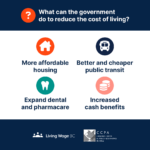Tied-up in traffic
By Michael Jessen
Think your commute from Balfour, Castlegar, Nelson, Slocan Valley or Ymir is a drag? Just be glad you don’t live in Chicago or Washington, DC.
Residents living beyond Longbeach on the North Shore got a taste of what can happen when a highway is shut down, but commuters in the West Kootenay don’t have the huge congestion problems that face drivers every day in those two American cities.
Chicagoan and Washingtonian car commuters lose 70 hours of their lives to rush-hour traffic every year, according to the 2010 Urban Mobility Report, published by the Texas Transportation Institute at Texas A&M University.
That’s almost three full days crawling along at a speed slower than someone can bicycle.
And that’s only how much longer they spend in their cars than they would have under better driving conditions. The average American spends over 100 hours a year commuting while a 2006 report from Statistics Canada found the average Canadian spent 12 days annually in the drive to and from wherever.
Commuting daily to work not only takes a toll on your time, but also your wallet and your mental health.
According to the TTI report: “The total amount of wasted fuel in 2009 topped 3.9 billion gallons – equal to 130 days of flow in the Alaska Pipeline.” Washington drivers wasted 57 gallons of gasoline during their extra hours on the road.
Overall, the report concludes that congestion cost Americans $115 billion in 2009, up from $24 billion in 1982 when calculated in 2009 dollars. Engines idling in traffic gobbled up 3.9 billion gallons of gasoline.
Nationally, congestion cost the average commuter $808, up from an inflation adjusted $351 in 1982. And the average time lost to congestion nationwide was 34 hours, up from 14 hours in 1982.
Drivers in the U.S. capital are learning that time in traffic is torture.
The number of drivers in the Washington region who say they frequently feel uncontrollable anger toward another driver has doubled in the past five years, according to a Washington Post poll taken last year. Almost a third of drivers said they’re overcome with that wild rage from time to time.
Commuting is also associated with raised blood pressure, musculoskeletal disorders, lateness, absenteeism, and adverse effects on cognitive performance.
No wonder researchers have found commuting to be the daily activity most dangerous to happiness.
Swiss economists Bruno Frey and Alois Stutzer discovered a new human foible a few years ago, which they labelled ‘the commuters paradox.’ They found that, when people are choosing where to live, they consistently underestimate the pain of a long commute.
This leads people to mistakenly believe that the big house in the exurbs will make them happier, even though it might force them to drive an additional hour to work.
According to the calculations of Frey and Stutzer, a person with a one-hour commute has to earn 40 percent more money to be as satisfied with life as someone who walks to the office.
Harvard University public policy professor Robert D. Putnam, author of Bowling Alone: The Collapse and Revival of American Community, says that for every 10 minutes of commuting time, one’s social connections get cut by 10 per cent.
If commuting is so bad for us, why don’t our governments do more to ease the stress on our wallet and the strain on our time?
Better public transport is identified in the TTI report as a great help. The researchers estimated that the extensive public transport system in New York saved commuters almost $9 billion and over 350 million potential lost hours.
On the whole, public transportation in the U.S. made a huge difference in alleviating the money and time cost of congestion — it saved commuters 785 million hours and 640 million gallons of fuel over the year, for a total of $19 billion.
Improvements in road efficiency – road changes that aren’t just more roads – helped only half as much (Kind of makes you question the millions of dollars the Harper government poured into highway widening under Canada’s Economic Action Plan – like the $6 million spent outside Nelson.).
The report suggests a number of other options to improve commuting such as more options for workers to telecommute, flex work times, and ridesharing. One of the most important recommendations is to alter land development patterns to make biking, walking and mass transit more practical.
Swedish automaker Volvo has an existential approach to the commuting problem, something they call SARTRE — Safe Road Trains for the Environment.
The road train creates a semi-autonomous conga line of cars following one leader vehicle with a professional driver (Don’t worry; you can exit the train at any time.). The cars all ‘draft’ each other, exploiting air drag to increase efficiency, and the closely-controlled lines can improve congestion.
Volvo claims an 80 per cent reduction in accidents and a 20 per cent reduction in emissions with road trains.
There is no ‘best way’ to solve congestion problems; every region and community will have to develop their own policies and programs to help reduce the human and environmental toll of our exhausting odyssey to work or school.
But having a transportation policy that develops ways to reduce single car commuting is a must; more roads are not the answer. A clean transportation agenda will not only protect our environment and our climate, but it will protect your family from the impact of rising oil prices.
Policy makers, however, must beware of the Jevons Paradox – first identified by William Stanley Jevons in his 1865 book The Coal Question. Jevons argued that improvements in fuel efficiency tend to increase, rather than decrease, fuel use.
Modern economists have argued their studies show increased efficiency lowers the cost of a given resource, creating more demand for the resource. In other words, the wrong policies can make more efficient commuting lead to more commuting.
“You can’t adapt to commuting, because it’s entirely unpredictable,” argues Harvard University psychologist Daniel Gilbert. “Driving in traffic is a different kind of hell every day.”
There’s no refuting that commuting is polluting and no disputing most commuters are rooting for a sustainable solution. What direction nirvana?
Resources:
The TTI report can be downloaded from http://mobility.tamu.edu/ums/report/.
Find out more about the Frey and Stutzer research at http://ideas.repec.org/p/zur/iewwpx/151.html.
You can tap into ridesharing in the West Kootenay through Kootenay Rideshare at http://www.kootenayrideshare.com/.
Read more about SARTRE at http://www.sartre-project.eu/en/Sidor/default.aspx.
Statistics Canada has a website detailing research on rural commuting at http://www.statcan.gc.ca/pub/75-001-x/2008111/article/10720-eng.htm.
The Victoria Transport Policy Institute is an independent research organization dedicated to developing innovative and practical solutions to transportation problems. It has a number of free resources on its website at http://www.vtpi.org/.
The Norwegians and Austrians spent the least time on commuting, according to a report by the Organisation for Economic Cooperation and Development (OECD). The Dutch spent the most time on commuting of all Europeans – 50 minutes on average per day.
During his 40 years in Nelson, Michael Jessen has written more than 700 columns on sustainable lifestyles, energy efficiency, and waste reduction for both print and online media. Currently, Michael is an efficiency and renewable energy advisor and operates Zero Waste Solutions, a consultancy specializing in aiding companies, communities, and individuals in the sustainable use of resources. He can be contacted at zerowaste@shaw.ca.



























Comments